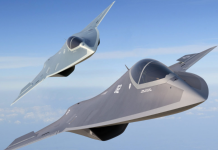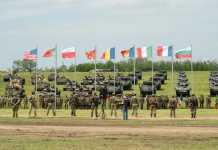Listed below are the macroeconomic trends impacting the soldier modernisation theme, as identified by GlobalData.
The emergence of new warfighting doctrines and force structures that have been adopted by various countries including NATO members has highlighted the need for independent and networked infantry units that are capable of conducting deployments with a minimal logistical footprint. Several military organisations are pushing for modernisation across all aspects of a soldier’s role and equipment on the battlefield amid the development of these new structures.
Defence budgets
National defence budgets are the primary factor that determines a government’s ability to acquire the necessary technology and develop the capabilities it requires to effectively conduct military operations. The cycle of political crises and financial constraints that expand and contract national defence budgets poses a challenge to the modernisation of military forces, particularly in smaller nations. Procurement officers must continuously seek to balance the financial cost of military modernisation with the strategic need to supply their forces with modern technologies to achieve peak efficiency.
In light of the recent shift away from counterinsurgency operations toward peer and near-peer conflicts, many national governments have grown or stabilised their defence budgets in order to modernise their inventories and maintain a viable military deterrent. It provides both military organisations and commercial entities with a unique opportunity to conduct large-scale modernisation programmes, as illustrated by the global push for soldier modernisation.
Covid-19
The impact of the Covid-19 pandemic on the aerospace and defence sector can be seen in terms of both reduced spending from the military side as well as supply-chain issues and the downsizing of workforces on the commercial side. The funding for the European Defence Fund fell by €5.5bn ($6.8bn) in 2020, equating to a 45% reduction in European Union (EU) member state defence projects, while the US Department of Defence (DOD) reported that 48 major defence acquisition programmes (MDAPs) suffered from pandemic-related delays, with a median impact of two months. The US Army Futures Command reported that Covid-19 restrictions had caused a six-week delay in the delivery of Next-Generation Squad Weapon prototypes, while field testing of Microsoft’s Integrated Visual Augmentation (IVAS) system was delayed by three months.
On the commercial side, defence companies of all sizes faced numerous challenges due to limited cash flow and supply-chain vulnerability, with small and medium enterprises being the most severely affected by these issues. Major defence contractors including BAE Systems, General Dynamics, and Textron Aviation paused production at certain key facilities as they wrestled with employee fatalities and had difficulty accessing certain raw materials.
Most national governments, however, remained acutely aware of the issues this industry was facing and, in many cases, provided financial support to both large and small companies to ensure that already-vulnerable supply chains remained operational.
Larger economies with an established defence industrial base reacted relatively fast, with the US DOD providing the domestic defence sector with financial support totalling $4.6bn in 2020 and the UK Ministry of Defence (MOD) stating that £9bn ($11.1bn) in corporate financial support had been provided to the industry by Q1 of 2021.
The soldier modernisation market was undoubtedly affected by the Covid-19 pandemic and its associated restrictions, but recovery efforts within the defence industry have been successful mainly due to longstanding efforts to reduce supply-chain vulnerabilities and limit reliance on sole-source suppliers.
Common procurement and R&D cost-sharing
Common procurement endeavours between allied military organisations are becoming increasingly popular in the current defence market, as rising international cooperation and widespread cost-saving measures have led many smaller nations to pursue joint modernisation programmes. The trend benefits both commercial and national security interests, as the rising development costs of new technologies obligate both public and private entities to reach a compromise in order to ensure the continuation of various soldier modernisation initiatives. The Belgium, Netherlands, Luxembourg (BENELUX) soldier modernisation programme is one such example that allowed three bordering countries to maximise their purchasing power by procuring the same system.
Interoperability
Militaries worldwide are increasingly focused on maintaining interoperability between the myriad of platforms, systems, and technologies being employed across the various military branches due to the wider shift towards multi-domain operations. The principle of interoperability within the field of soldier modernisation is key to ensuring infantry troops can seamlessly communicate, operate, and support other elements during joint operations.





